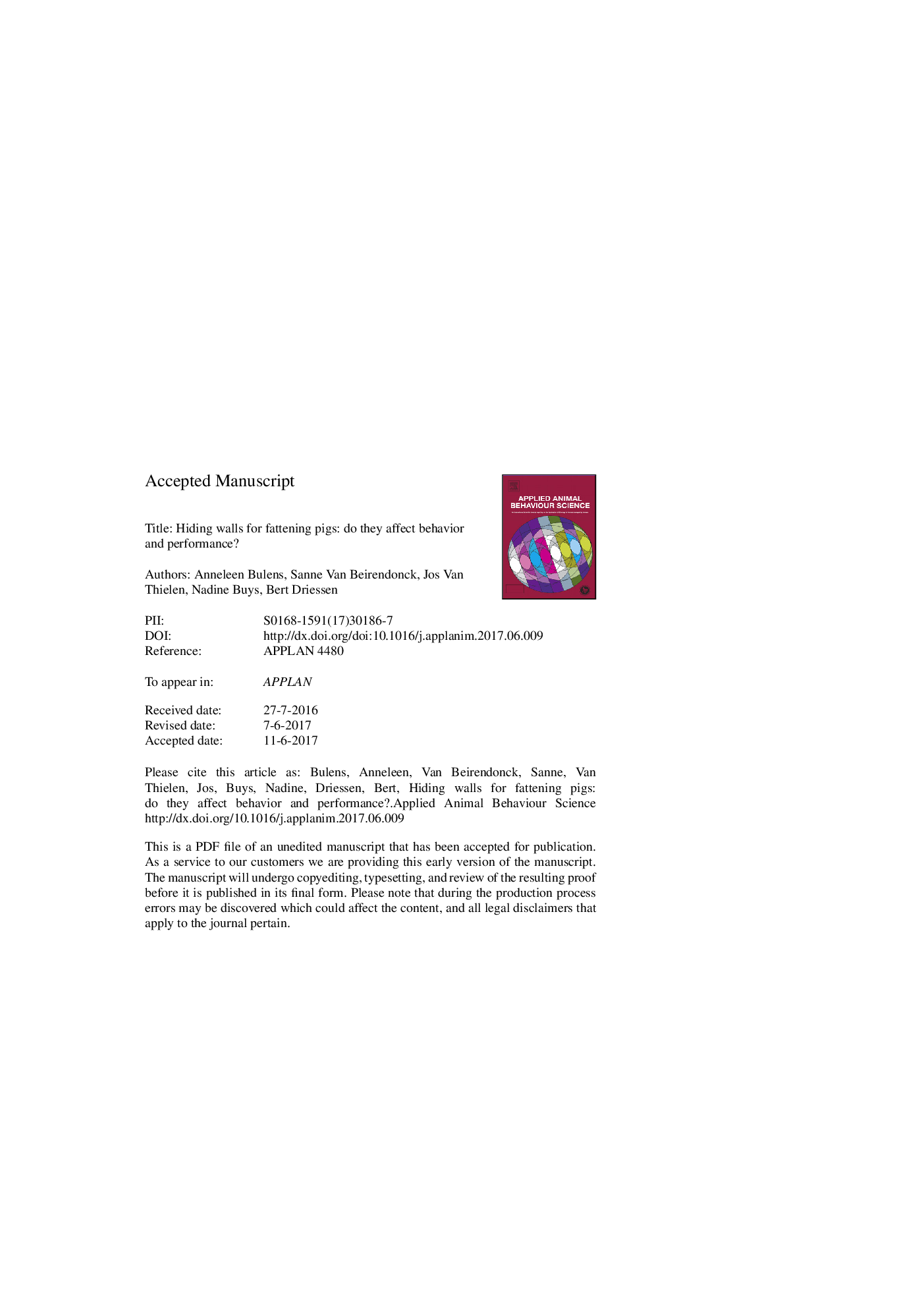| کد مقاله | کد نشریه | سال انتشار | مقاله انگلیسی | نسخه تمام متن |
|---|---|---|---|---|
| 5763244 | 1625311 | 2017 | 20 صفحه PDF | دانلود رایگان |
عنوان انگلیسی مقاله ISI
Hiding walls for fattening pigs: Do they affect behavior and performance?
ترجمه فارسی عنوان
دیوارهای پنهان برای خوک های چاق: آیا آنها بر رفتار و عملکرد تاثیر می گذارد؟
دانلود مقاله + سفارش ترجمه
دانلود مقاله ISI انگلیسی
رایگان برای ایرانیان
کلمات کلیدی
رفتار - اخلاق، خوک خوک، پنهان کردن دیوار، کارایی،
موضوعات مرتبط
علوم زیستی و بیوفناوری
علوم کشاورزی و بیولوژیک
علوم دامی و جانورشناسی
چکیده انگلیسی
The prevalence of harmful and unwanted behavior in fattening pigs is influenced by different factors including housing. Housing may include the opportunity to hide from aggressive pen mates and this ability is related to pen design and shape. The aim of this study was to investigate the effect of a hiding wall in the pen on the behavior and performance of pigs during the entire fattening period (30-110Â kg). A total of 383 pigs were spread over standard control pens without hiding opportunities, and treatment pens. In the latter pens, a hiding wall was constructed, consisting of two solid panels positioned in a “T” shape against the side or back wall of the pen. Behaviors using an extended ethogram, the presence of lesions and weight were recorded during the entire fattening period. The presence of a hiding wall influenced neither growth, nor the prevalence of most pen mate manipulations (based on behavioral observations), but it did affect the prevalence of belly nosing and manipulating pen fittings. A lower frequency of these behaviors was observed in pens with hiding walls, which might indicate a lower stress level. Severe ear lesions were recorded more frequently in pens with a hiding wall, while severe tail lesions were recorded more often in control pens. These contradictory results might be related to the fact that the hiding wall disturbed lying behavior in the pen and caused restricted access to the backside of the pen, due to its position. Consequently, ear lesions might have been caused by pigs trying to reach the back of the pen. Other aggressive behaviors were not affected, as both the frequency of fighting and head knocking were not influenced by the prevalence of a hiding wall, and the prevalence of lesions on the front region of the body did not differ between control and treatment pens. In conclusion, the hiding wall did not contribute to a lower frequency of aggressive behavior, but was associated with less tail lesions, and a lower frequency of pen manipulation and belly nosing. The latter results might indicate a lower stress-level in pens with hiding walls.
ناشر
Database: Elsevier - ScienceDirect (ساینس دایرکت)
Journal: Applied Animal Behaviour Science - Volume 195, October 2017, Pages 32-37
Journal: Applied Animal Behaviour Science - Volume 195, October 2017, Pages 32-37
نویسندگان
Anneleen Bulens, Sanne Van Beirendonck, Jos Van Thielen, Nadine Buys, Bert Driessen,
